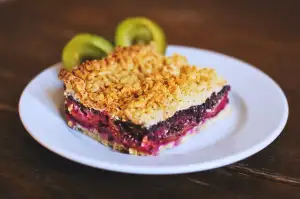Master the Art of Poaching Eggs: Foolproof Recipe for Perfectly Poached Eggs

- Step 1: Prepare the necessary equipment
- Step 2: Choose fresh eggs
- Step 3: Bring water to a gentle simmer
- Step 4: Add vinegar to the water
- Step 5: Crack the egg into a small bowl
- Step 6: Create a gentle whirlpool in the water
- Step 7: Slide the egg into the whirlpool
- Step 8: Cook the egg for 3-4 minutes
- Step 9: Remove the poached egg from the water
- Step 10: Serve and enjoy your perfectly poached egg
- Tips for poaching eggs successfully
Poached eggs are a classic breakfast dish that can elevate any meal. With their soft, silky texture and runny yolk, they add a touch of elegance to dishes like Eggs Benedict or simply enjoyed on their own. While poaching eggs may seem intimidating, with a few simple steps, you can master the art of poaching and create perfectly cooked eggs every time. In this article, we will guide you through the process of poaching eggs, from preparing the necessary equipment to serving up a deliciously poached egg. So let's dive in and unlock the secrets to achieving culinary perfection with poached eggs!
Step 1: Prepare the necessary equipment
Before you embark on your journey to master the art of poaching eggs, it is essential to gather all the necessary equipment. Here's what you'll need:
1. A medium-sized saucepan: Choose a saucepan that is deep enough to hold water and allow the egg to fully submerge.
2. Fresh eggs: Opt for eggs that are as fresh as possible, as they tend to hold their shape better during the poaching process.
3. Slotted spoon: This will come in handy when removing the poached egg from the water without breaking it.
4. Small bowl: Crack each egg into a small bowl before adding it to the simmering water. This will make it easier to slide the egg into the pot without any unwanted shell fragments.
5. Vinegar: Adding a splash of vinegar to the water helps coagulate the egg whites, resulting in a neater and more compact poached egg.
By having these essential tools at your disposal, you'll be well-prepared to create perfectly poached eggs that will impress even the most discerning palates. So let's move on to step two and choose our fresh eggs!
Step 2: Choose fresh eggs
When it comes to poaching eggs, the freshness of the eggs is crucial for achieving the perfect result. Fresh eggs have a tighter egg white, which helps to hold the shape of the poached egg. To ensure you have fresh eggs, check the expiration date on the carton or do a simple freshness test. Fill a bowl with water and gently place an egg in it. If the egg sinks to the bottom and lays flat on its side, it is fresh. If it stands upright or floats, it is not as fresh and may not yield the desired outcome. So remember, always choose fresh eggs for your poaching adventure!
Step 3: Bring water to a gentle simmer
To achieve perfectly poached eggs, it is crucial to bring the water to a gentle simmer. Fill a medium-sized saucepan with about 2 inches of water and place it on the stove over medium heat. Allow the water to come to a gentle simmer, where small bubbles rise slowly from the bottom of the pan. Avoid boiling the water vigorously as this can cause the egg whites to disperse in the water, resulting in an unevenly cooked poached egg. Patience is key at this stage as maintaining a gentle simmer ensures that your eggs cook evenly and retain their shape.
Step 4: Add vinegar to the water
Adding vinegar to the water is an essential step in achieving perfectly poached eggs. The acidity in the vinegar helps coagulate the egg whites faster, resulting in a neater and more compact shape. It also prevents the eggs from spreading too much in the water. For best results, add about 1 tablespoon of vinegar per cup of water. White distilled vinegar or apple cider vinegar works well for this purpose. Make sure to stir the water gently after adding the vinegar to distribute it evenly. This simple addition will greatly improve your poaching technique and ensure beautifully formed poached eggs every time.
Step 5: Crack the egg into a small bowl
To ensure a perfectly poached egg, it is essential to crack the egg into a small bowl before adding it to the simmering water. This step helps in two ways. Firstly, it allows you to inspect the egg for any shell fragments or abnormalities. Secondly, it makes it easier to slide the egg gently into the water without breaking the yolk.
Start by cracking a fresh egg into a small bowl. Take your time and be careful not to break the yolk during this process. If you accidentally get any shell fragments in the bowl, use another piece of shell to scoop them out.
Cracking the egg into a separate bowl also gives you more control over how you add it to the water. By gently sliding it from the bowl's edge into the simmering water, you can prevent any sudden disturbances that may cause the yolk to break.
Remember, using a small bowl is crucial as it allows for better maneuverability and precision when transferring the egg. So take this extra step and crack your eggs into a small bowl before poaching them for perfect results every time!
Step 6: Create a gentle whirlpool in the water
Creating a gentle whirlpool in the water is a crucial step in achieving perfectly poached eggs. This technique helps to shape the egg and prevent it from spreading out too much. To create the whirlpool, take a spoon or spatula and stir the simmering water in one direction until it forms a swirling vortex.
The whirlpool should be gentle, not too aggressive, as this can cause the egg white to break apart. The swirling motion of the water will help to wrap the egg white around the yolk, giving it that classic round shape.
By creating a whirlpool, you are essentially containing the egg within its own little pocket of water. This helps to keep the egg together and prevents it from spreading out too thinly.
Remember to maintain the whirlpool while adding each subsequent egg. If necessary, give it a quick stir before sliding in another egg. The swirling motion will ensure that each egg maintains its shape and cooks evenly.
Now that you have created a gentle whirlpool in the water, you are ready for the next step: sliding the egg into the whirlpool.
Step 7: Slide the egg into the whirlpool
Once you have created a gentle whirlpool in the water, it's time to carefully slide the cracked egg into the center of the swirling water. The whirlpool helps to keep the egg together and prevents it from spreading out too much.
Hold the small bowl with the cracked egg close to the surface of the water and gently tilt it, allowing the egg to slide smoothly into the center of the whirlpool. Be cautious not to drop it from too high, as this can cause the yolk to break.
The swirling motion of the water will help to wrap and shape the egg white around itself, resulting in a beautifully formed poached egg. Allow it to cook undisturbed for 3-4 minutes, depending on how runny or firm you prefer your yolk.
Remember, practice makes perfect when it comes to sliding eggs into a whirlpool. With time, you'll become more confident and skilled at achieving that perfectly poached egg every time.
Step 8: Cook the egg for 3-4 minutes
Once you've added the egg to the whirlpool, let it cook undisturbed for 3-4 minutes. The gentle simmering water will envelop the egg, allowing it to cook evenly and retain its shape. Keep an eye on the timer to ensure you don't overcook or undercook the egg.
Cooking time may vary depending on your preference for yolk consistency. For a runny yolk, cook for around 3 minutes, while a firmer yolk will require closer to 4 minutes. Use a slotted spoon to gently lift the egg from the water and check its doneness.
Remember that practice makes perfect when it comes to poaching eggs. Don't be discouraged if your first few attempts aren't flawless. With time and experience, you'll become more adept at achieving that ideal poached egg with a lusciously runny yolk and perfectly set whites.
Now that you've mastered the art of cooking a perfectly poached egg, it's time to move on to our final step - removing the poached egg from the water and serving it up in all its glory!
Step 9: Remove the poached egg from the water
Once the cooking time is up, carefully lift the poached egg out of the water using a slotted spoon. Gently shake off any excess water before transferring it to a plate lined with paper towels. This will help absorb any remaining moisture and prevent the egg from becoming watery.
Be cautious while handling the poached egg as it can be delicate. Use a gentle touch to avoid breaking the yolk or damaging its shape. If you prefer a firmer yolk, cook it for an additional minute or two.
If you're making multiple poached eggs, repeat this process for each one, ensuring that you remove them in the order they were added to the water. This way, they will all be cooked evenly and ready to serve at once.
Remember that timing is crucial when removing the poached eggs from the water. Overcooking can result in a firm yolk, while undercooking may leave you with a runny center. Aim for a perfectly cooked poached egg with a soft, silky yolk that oozes out when cut into.
Now that you've successfully removed your poached egg from the water, it's time to move on to the final step - serving and enjoying your culinary masterpiece!
Step 10: Serve and enjoy your perfectly poached egg
Once the egg is cooked to your desired level of doneness, carefully remove it from the water using a slotted spoon. Gently shake off any excess water before transferring it to a plate lined with a paper towel to absorb any remaining moisture.
Now it's time to savor your culinary masterpiece! Season the poached egg with salt and pepper or any other desired seasonings. The delicate, velvety texture of the perfectly poached egg pairs well with a variety of dishes.
You can serve the poached egg on its own as a simple yet elegant breakfast or brunch option. It also makes a wonderful addition to salads, sandwiches, or even atop avocado toast for a nutritious and satisfying meal.
Remember, practice makes perfect when it comes to poaching eggs. With time and experience, you'll become more confident in achieving consistently flawless results. So go ahead, indulge in the deliciousness of your perfectly poached egg creation and impress your friends and family with your newfound culinary skills!
Tips for poaching eggs successfully
1. Use fresh eggs: Fresh eggs have a firmer white, which helps to hold their shape better during the poaching process.
2. Add vinegar to the water: Adding a splash of vinegar to the simmering water helps to coagulate the egg white quickly, resulting in a neater and more compact poached egg.
3. Create a gentle whirlpool: Before adding the egg, create a gentle whirlpool in the water by stirring it with a spoon. This will help to wrap the egg white around the yolk, giving you that perfect round shape.
4. Use a slotted spoon: When removing the poached egg from the water, use a slotted spoon to drain off any excess water. This will prevent your perfectly poached egg from becoming watery when served.
5. Experiment with cooking times: Depending on your preference, you can adjust the cooking time to achieve different levels of doneness for your poached eggs. Cook them for 3-4 minutes for soft and runny yolks or 5-6 minutes for firmer yolks.
6. Practice makes perfect: Poaching eggs can be challenging at first, so don't get discouraged if your first few attempts aren't perfect. With practice, you'll become more confident and master the art of poaching eggs.
Remember, poaching eggs is all about finding what works best for you and adapting these tips to suit your taste preferences. So keep experimenting and enjoy the process of creating beautifully poached eggs every time!
With these foolproof steps, you can now confidently master the art of poaching eggs. Remember to prepare your equipment, choose fresh eggs, bring the water to a gentle simmer, add vinegar, crack the egg into a small bowl, create a whirlpool, slide the egg in, cook for 3-4 minutes, and remove it from the water. Follow these tips and soon you'll be enjoying perfectly poached eggs every time. So go ahead and impress your friends and family with your culinary skills. Happy poaching!
Published: 06. 01. 2024
Category: Recipes



